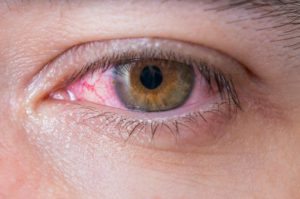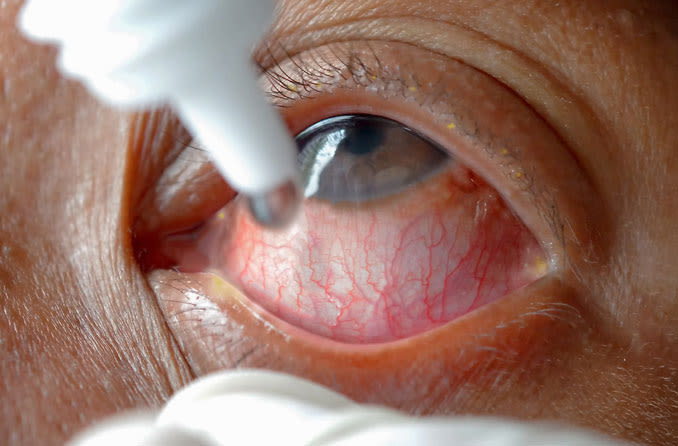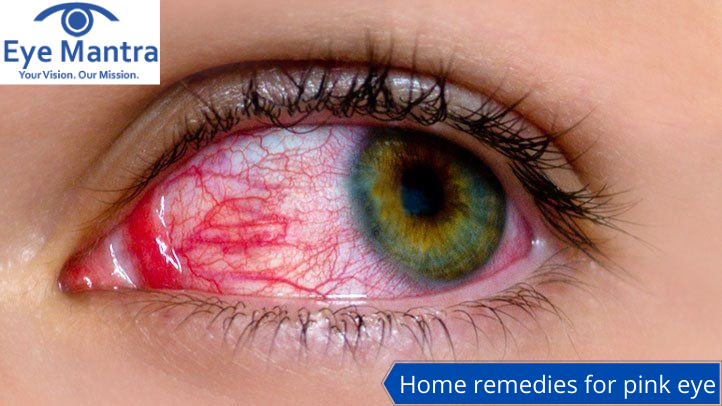Dealing with pink eye? You’re not alone! This common eye condition, known as conjunctivitis, can be a real nuisance, causing discomfort, redness, and a feeling that something’s in your eye. But don’t worry, help is at hand! In this blog, we’re diving into some quick, easy, and practical home remedies that can bring you relief from pink eye right from the comfort of your home.
From soothing cold compresses to the healing touch of aloe vera, we’ll guide you through simple steps to ease your symptoms. Plus, we’ve got tips on keeping things hygienic to prevent the spread of infection. So, let’s get started and turn those pesky pink eyes back to normal!”
Contents
Understanding Pink Eye
 Pink eye, medically known as conjunctivitis, is a common eye condition that can be both uncomfortable and irritating. It occurs when the conjunctiva, the transparent membrane that lines your eyelid and covers the white part of your eyeball, becomes inflamed. This inflammation gives the eye its characteristic pink or reddish appearance.
Pink eye, medically known as conjunctivitis, is a common eye condition that can be both uncomfortable and irritating. It occurs when the conjunctiva, the transparent membrane that lines your eyelid and covers the white part of your eyeball, becomes inflamed. This inflammation gives the eye its characteristic pink or reddish appearance.
There are several causes of pink eye:
- Viral Conjunctivitis: This is the most common type and is caused by the same type of viruses responsible for the common cold. It’s highly contagious but usually clears up on its own within a few days without medical treatment.
- Bacterial Conjunctivitis: Caused by bacteria, this type of pink eye can cause serious damage to the eye if left untreated. It’s also contagious and is characterized by a sticky, yellow or greenish-yellow eye discharge.
- Allergic Conjunctivitis: Triggered by allergens like pollen, dust, or pet dander, this type is not contagious. It often occurs seasonally and can cause itching, redness, and tearing in both eyes.
- Irritant Conjunctivitis: This can happen when a foreign body or a chemical substance irritates the eye. It’s not infectious.
The symptoms of pink eye can vary depending on the cause, but generally include:
- Redness in the white of the eye or inner eyelid
- Increased amount of tears
- Thick yellow discharge that crusts over the eyelashes, especially after sleep
- Itchy, burning eyes
- Blurred vision
- Increased sensitivity to light
Understanding these basics about pink eye is crucial as we explore the home remedies that can provide relief and aid in recovery.
What Does the First Stage of Pink Eye Look Like?
The initial stage of pink eye, also known as conjunctivitis, typically presents with several symptoms that are not only noticeable but also manageable with some simple home remedies. Here’s what to look out for:
- Redness: The most obvious sign is a reddish or pink appearance in the white of the eye. This is due to inflammation and can be soothed with cool compresses.
- Irritation and Discomfort: A feeling like there’s something in the eye. This can be alleviated by avoiding rubbing the eyes and using clean, damp cloths to gently cleanse the area.
- Tearing: Increased tear production leading to watery eyes. Keeping the eyes clean and avoiding potential allergens can help.
- Mild Swelling: Swollen eyelids or areas around the eye. Gentle cold compresses can reduce swelling.
- Sensitivity to Light: Increased sensitivity to light, or photophobia. Wearing sunglasses can help ease discomfort in bright environments.
- Itching: Especially in allergic conjunctivitis. Cool compresses and avoiding rubbing can provide relief.
- Discharge: Thick, yellowish discharge in bacterial conjunctivitis, or watery discharge in viral conjunctivitis. Keeping the eye area clean and avoiding the use of shared towels or washcloths can prevent spreading.
While these symptoms are common in the first stage of pink eye, they can overlap with other eye conditions. Therefore, it’s crucial to get a proper diagnosis, especially if symptoms persist or worsen. In the meantime, there are simple home remedies that can provide some relief and help manage the symptoms.
How Long Will Pink Eye Last?
The duration of pink eye largely depends on its type and cause.
- Viral Conjunctivitis: This is typically the most common form of pink eye, caused by a virus similar to that of the common cold. It usually clears up on its own within a few days to about two weeks without the need for medical treatment. The symptoms are at their worst for the first 3-5 days before gradually improving.
- Bacterial Conjunctivitis: When caused by bacteria, pink eye can last for as long as 10 days without treatment. However, with antibiotic drops or ointments, you may start to see improvement within 24-48 hours. It’s important to complete the full course of antibiotics to ensure the infection is fully cleared.
- Allergic Conjunctivitis: This type is caused by allergens, such as pollen, and can last as long as you’re exposed to the allergen. Once the allergen is removed or avoided, the symptoms should improve within a day or two. If you have ongoing allergies, this type of pink eye can be a recurring issue.
- Irritant Conjunctivitis: Caused by irritation from a foreign body or chemical exposure, this type of pink eye typically improves once the irritant is removed. If the eye has been flushed out and no other complications occur, symptoms can resolve in a few hours to a day.
Simple Home Remedies for Pink Eye

Pink eye, though uncomfortable, can often be managed with some simple home remedies. These treatments can help alleviate symptoms like irritation, swelling, and discomfort:
Cold Compress for Soothing Relief
- How It Helps: A cold compress can reduce swelling and provide a soothing effect for irritated eyes.
- Safe Use: Soak a clean cloth in cold water, wring it out, and gently place it over your closed eyelids. Do this several times a day for relief.
Warm Compress to Reduce Discomfort
- Benefits: Warm compresses can help loosen any crusts formed by discharge and soothe eyes affected by infectious pink eye.
- Application: Use a clean, warm, damp cloth. Apply it gently to your closed eyelids for a few minutes. Repeat this several times a day.
Saline Solution as a Gentle Rinse
- Effectiveness: Saline solution can help rinse out irritants and cleanse the infected eye, reducing discomfort.
- Usage: Use a store-bought sterile saline solution or make your own by dissolving a teaspoon of salt in a cup of boiled and cooled water. Use it to gently rinse your eyes.
Tea Bags for Natural Treatment
- Natural Remedy: Chamomile or green tea bags, cooled after steeping, can reduce inflammation and have mild antibacterial properties.
- How to Use: After cooling, place the tea bags on your closed eyelids for a few minutes.
Aloe Vera’s Healing Properties
- Healing Touch: Aloe vera gel has soothing properties but must be used correctly.
- Application Caution: Apply only around the eyes, not directly in them. Use pure aloe vera and avoid any with additives or fragrances.
Honey Water Eyewash
- Antibacterial Properties: Honey diluted in warm water can serve as a natural eyewash.
- How to Prepare: Mix a small amount of honey in boiled and cooled water. Use this solution to gently rinse the eyes.
Maintaining Hygiene to Prevent Spread
- Importance: Practice good hygiene like frequent hand washing, not touching your eyes, and using clean pillowcases to prevent spreading the infection.
Diet and Hydration for Eye Health
- Role in Recovery: A balanced diet rich in vitamins and staying hydrated can support eye health and aid in the recovery process.
Remember, while these home remedies can provide relief, they are not a substitute for professional medical treatment, especially if symptoms are severe or worsening. If you suspect you have pink eye, consult a healthcare professional for proper diagnosis and treatment.
How Can I Stop It From Spreading?
Preventing the spread of pink eye is crucial, especially since some forms are highly contagious. Here are some effective strategies to stop its spread:
- Wash your hands regularly
- Avoid touching your eyes
- Avoid sharing towels, washcloths, or pillowcases. Use a clean towel every time you wash your face or hands.
- Regularly change and wash your pillowcases to eliminate any lingering bacteria or virus.
- If you use eye makeup, discard any products that were used while you had pink eye to prevent re-infection.
- Never share eye drops, makeup, or makeup brushes with others.
- If you wear contact lenses, switch to glasses until your pink eye clears up.
- Dispose of any lenses you used while infected.
- Regularly clean surfaces like countertops, doorknobs, and smartphones, especially if you’ve touched them after contacting your infected eye.
- If your pink eye is caused by a virus or bacteria and you have severe symptoms, it might be best to stay home from work or school to prevent spreading it to others.
- Teach your family about not touching their eyes and the importance of handwashing to prevent the spread within your household.
By following these steps, you can significantly reduce the risk of spreading pink eye to others, while also promoting a faster recovery for yourself.
How to Treat Pink Eye in Children
Treating pink eye in toddlers requires a gentle approach, considering their sensitive eyes and the need for safe treatments. Here are some steps to treat pink eye in young children:
- Before starting any treatment, it’s important to consult a pediatrician. They can determine if the pink eye is viral, bacterial, or allergic, and recommend the appropriate course of action.
- Use a clean, damp cloth or a cotton ball to gently wipe away any discharge from your toddler’s eye.
- Always wipe from the inside corner of the eye outward and use a new cloth for each eye to prevent cross-contamination.
- Apply a clean, cool compress to soothe irritation and reduce swelling. For bacterial infections, a warm compress can help. Ensure the compress is not too hot and is comfortable for your toddler’s skin.
- If the pediatrician prescribes antibiotic eye drops or ointment for bacterial conjunctivitis, ensure to apply it as directed. It’s important to complete the entire course of antibiotics, even if symptoms improve.
- For allergic conjunctivitis, the doctor may recommend antihistamine drops or suggest ways to avoid allergens.
- Encourage your child not to touch or rub their infected eye.
- Keep their nails short to prevent accidental scratching.
- Wash your and your toddler’s hands frequently, and keep their bed linens, towels, and washcloths clean and separate from those of other family members.
Treating pink eye in toddlers requires patience and care. Always prioritize hygiene and follow the doctor’s instructions for a speedy recovery.
Conclusion
In conclusion, while home remedies can provide comfort and temporary relief for pink eye symptoms, it’s important to be aware of their limitations. These remedies are not a substitute for professional medical advice or treatment, especially in more severe cases or when dealing with toddlers and young children. If your pink eye symptoms persist, worsen, or are accompanied by severe pain, changes in vision, or intense redness, it’s crucial to seek professional medical attention.
If you’re experiencing ongoing eye issues or simply looking for a thorough eye checkup, don’t hesitate to reach out. Prioritize your eye health today. Book your free appointment at the Best Eye Hospital in India, or give us a call at 9711116605. Our team of experienced eye care professionals is ready to provide you with the care and attention your eyes deserve.



